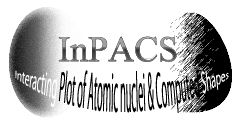Seminar (セミナー)2024.6.28 Michal Repisky & Lukas Konecny (The Arctic University of Norway)
2024年6月24日 | 新着情報
The following two seminars will be held on June 28, 2024, at Meeting Room A in Center for Computational Sciences, University of Tsukuba, starting from 15:15 pm.
- Speaker: Michal Repisky
Affiliation: Comenius University in Bratislava, Slovakia & UiT The Arctic University of Norway, Tromsø, Norway
Title: Relativistic Hamiltonians and DFT
Abstract: Despite the success of non-relativistic quantum mechanics in describing molecular and material properties, there are many phenomena for whose correct description the special theory of relativity has to be considered. These phenomena are dubbed relativistic effects and are prominent when the systems of interest involve heavy elements or spin. In my presentation I will show how the Dirac equation is solved in quantum chemistry while introducing the four-component Dirac-Coulomb Hamiltonian and relativistic DFT methodology. Moreover, I will present modern two-component X2C Hamiltonian based on algebraic decoupling of the original Dirac Hamiltonian and show that it allows to reproduce reference four-component results at a fraction of their cost allowing us to abandon the still widespread notion of the infeasibility of fully relativistic approaches. - Speaker: Lukas Konecny
Affiliation: UiT The Arctic University of Norway, Tromsø, Norway & Max Planck Institute for the Structure and Dynamics of Matter, Hamburg, Germany
Title: Relativistic spectroscopy in frequency and time domains
Abstract: I will present the extension of relativistic electronic structure methods into the realm of dynamical molecular properties in the form of relativistic time-dependent density functional theory (TDDFT). I will present two approaches to relativistic TDDFT as implemented in our computer program ReSpect. First is the conventional linear response TDDFT and its applications for electron absorption and circular dichroism spectroscopies with focus on the core region where both scalar and spin-orbit relativistic effects are especially pronounced. Next is the real-time solution of the Dirac-Kohn-Sham equation that offers access to non-linear optical properties as well as modern attosecond spectroscopies.

